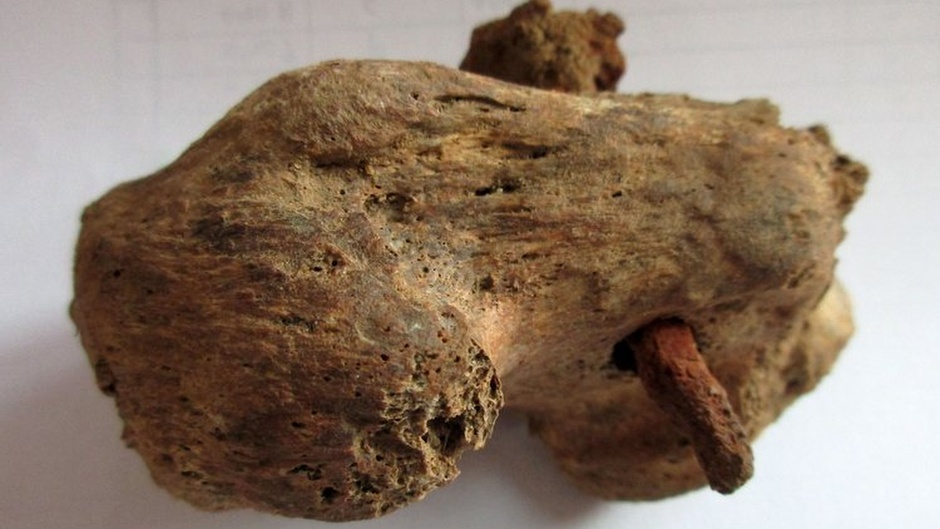A nail through the heel bone – best evidence for Roman crucifixions found in England
It is the first evidence found in Europe of these type of executions in the Roman Empire.
Albion Archaeology, Premier, The Guardian, BBC · CAMBRIDGE · 13 DECEMBER 2021 · 11:12 CET

The best archaeological evidence so far of the practice of crucifixions in Roman times has been found in Cambridgeshire (United Kingdom).
Crucifixion was reserved to slaves and rebels, and the condemned were usualy tied to the cross rather than nailed. If nails were used, “it was routine to remove them afterwards”.
The skeleton found in a Roman archaeological site in Fenstanton (north-west of Cambridge) by the Albion Archaeology team was of a man aged 25-35. When the remains were examined in a laboratory, experts found a nail through the heel bone.
“The lucky combination of good preservation and the nail being left in the bone has allowed me to examine this almost unique example when so many thousands have been lost”, said Corinne Duhig, from the University of Camdridge. “This shows that the inhabitants of even this small settlement at the edge of empire could not avoid Rome’s most barbaric punishment”.
The researchers say the skeleton, which has been named “4926”, is between 1,661 and 1,891 years old. The man was one of 40 adults and five children buried in five small cemeteries in the same area.
This is one of the very few archaeological findings of crucifixions to date, and the best-preserved evidence so far of this practice in the Roman Empire.
“The remarkable fact about this skeleton is not that the man was crucified, but that his body was reclaimed after death and given a formal burial alongside others, leaving us with this extremely rare evidence of what had happened to him”, Albion Archaeology said on its website.
Published in: Evangelical Focus - culture - A nail through the heel bone – best evidence for Roman crucifixions found in England
